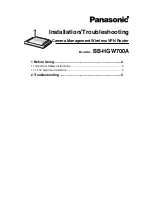
5. IP Network Interfaces
ROX™ v2.2 User Guide
75
RuggedBackbone™ RX5000
Temporary), then the following 4 bits to define the scope (1 - Node, 2 - Link, 5 - Site, 8 – Organization and
E – Global) and the last 112 bits identify a multicast Group ID. Some well-known multicast addresses
are mentioned below:
IPv6 M.Cast Address
Scope
Description
FF02::1
Link-Local
All Nodes on a Link
FF02::2
Link-Local
All Routers on a Link
FF01::1
Node-Local
Same Node
FF01::2
Node-Local
Same Router
FF05::2
Site-Local
All Routers on a Site
FF02::1:FFxx:xxxx
Link-Local
Solicited Node Address
Table 5.1. Multicast Addresses
5.2. IPv6 Neighbor Discovery
In IPv6 the Neighbor Discovery (ND) protocol is seen as a replacement for IPv4 ARP message. It uses
ICMPv6 messages with various purposes include finding a link-layer address of a neighbor, discover
neighbor routers, determine any change in the link-layer address, determine when a neighbor is down,
send network information from router to hosts, which includes hop limit, MTU size, determining the
network prefix used on a link, address auto configuration, and the default route information.
There many types of ICMPv6 messages among which five types of messages are used by the ND
protocol. The five types of ICMPv6 messages are briefly described in the following section:
• Router Solicitation (ICMPv6 type 133): This message is sent by hosts to routers as a request to router
advertisement message. It uses a destination multicast address: FF02::2
• Router Advertisement Messages (ICMPv6 type 134): This message is used by routers to announce
its presence in a network. The message includes network information related to IPv6 prefixes, default
route, MTU size, hop limit and auto configuration flag. It uses a destination multicast address: FF02::1
• Neighbor Solicitation Messages (ICMPv6 type 135): This message is sent by hosts to determine the
existence of another host on the same. The goal is to find the link-layer of neighbor nodes on the
same link.
• Neighbor Advertisement Messages (ICMPv6 type 136): This message is sent by hosts to indicate the
existence of the host and it provides information about its own link-layer address.
• Redirect Messages (ICMPv6 type 137): This message is sent by a router to inform a host about a
better router to reach a particular destination address.
In RX5000, Neighbor Discovery should be configured on all Ethernet interfaces enabled for IPv6. The
following figure displays the available configuration options for IPv6 Neighbor Discovery.
















































